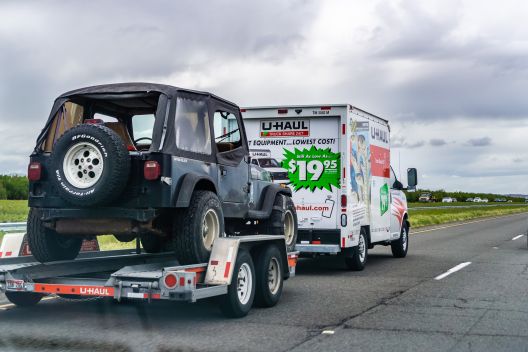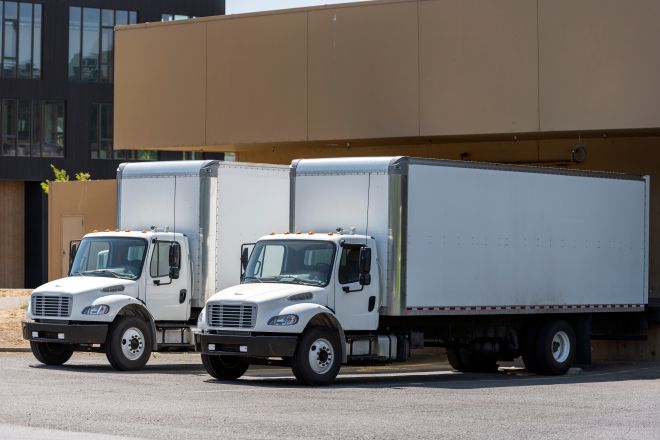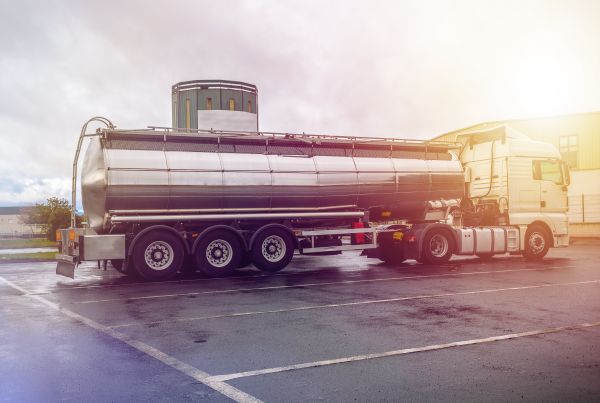If you have the time and the ability to do it yourself, renting a truck and moving your stuff yourself seems like a no-brainer. But, you should realize that getting the right size box truck is extremely important! Moving yourself can save you a lot of money, as you are able to make decisions about the steps involved in moving yourself versus hiring full-service movers. However, having the right size box truck for the job can make or break your move.
Connect with a verified mechanic in minutes. No appointments. No high fees. No waiting. Get back on the road and enjoy the ride.
Box trucks come in many different sizes and are used for many different things, such as carrying equipment to job sites or transferring merchandise from warehouses to stores.
Box trucks are very useful if you have some cargo to transport, and you may be wondering what size of trucks are available for your choosing. Box trucks are available in different sizes ranging from 10 to 26 feet long, and they can accommodate a wide variety of different cargo-carrying needs. Read more through this article to find out the different box truck sizes that are available and the different types of cargo that they can carry.
What are the Different Lengths of a Box Truck?
What a box truck can do will vary a lot depending on the make and model of the truck. There are some basic things that you can expect to get from different types of box trucks.
Box trucks come in all sizes, from 10 feet to 26 feet. Each truck type offers a different payload and cargo capacity. Box trucks are similar to cars, but they differ in size, length, fuel efficiency, and other important features. Box trucks are available in several different sizes, including the 12ft truck, the 16ft truck, the 22ft truck, and the 26ft truck.
Being able to pick the right size box truck is crucial, because it will allow you to carry more items and save time, money and fuel. Every type of box truck will not be able to offer the same perks and advantages to you as others will, since the payload and capacity of a specific truck will vary according to the makes and models of the truck.
Connect with a verified mechanic in minutes. No appointments. No high fees. No waiting. Get back on the road and enjoy the ride.
Based on the size options we’ve mentioned before, here’s some benchmark on what each length is best used for:
- 10-foot to 12-foot boxes are perfect for moving small rooms or one-bedroom apartments. Think about moving into a small room in a college dorm or a one-bedroom apartment.
- 16-foot moving trucks can move one-bedroom homes and small apartments. Depending on each individual case, you’re looking at an apartment sized at about three to four rooms total.
- Movers with a 20-foot, a 22-foot, or a 26-foot bed can accommodate two- to three-bedroom houses, or at least a house with about five to eight rooms.
In addition, certain models and sizes may mean different amenities. If you’re renting a 26ft truck, for example, you can expect to see amenities such as ample storage space, AM and FM radio, airbags, AUX and USB input sockets, and much more. The best thing to do is to talk to the rental company about the specifics of the truck you are renting, and get as much information as possible before renting.

Tips to Choose the Perfect Moving Truck
The size of your truck isn’t the only thing you need to consider. You can get the biggest moving truck on the lot, but that still won’t fit all the stuff you need to move. Moving things quickly, safely, and easily involves lots of planning. Sometimes people hurry through the process and think they have way too much stuff to move. It may not even be as a heavy load as you initially think.
So, make a list of everything you want to move, and don’t just make a list of boxes to get a good idea of the size of your moving truck. If you have a lot of furniture or appliances, make sure to include that in your moving list. If you have a lot of other things, don’t forget to include them. This will make everything else go much more smoothly.
If you have a lot of stuff, it may take some time to list everything on your list and research the cheapest moving trucks. However, if you take the time to list items and research truck sizes, you will have plenty of time on moving day. You’ll need that list to help you decide on a moving truck. When it comes time to pick out a moving truck, you have two options. You can use an online moving truck calculator to find out what size moving truck you will need. Simply input the items that you will be moving and it will calculate the size of the truck that will fit in the space.
Aside from the overall size, here are some things you should consider about the truck:
The height and weight
Trucks need to be the right size, and you need them to be able to lift the right amount of cargo. You should make sure the trucks are big enough to carry your goods safely and that the chassis is sturdy enough to carry your load. Try to find out whether any of the roads have any overpasses or tunnels or if there are any low bridges across the road. Ensure that the height of the trucks used is suitable for your warehouse. This will enable loading and unloading of cargo to be easier. Low ceilings and hanging pipes require shorter trucks to reach them.
The floor and door
Choosing the right floor for your box truck is very dependent on the type of cargo you plan to transport. If your cargo is heavy, leaky or needs to be washed with water after transportation, avoid using pine or hardwood floors.
It’s important that you know what type of door you want for your box truck. If you plan to load or unload cargo higher up, we suggest a roll-up door. But light trucks are only slightly larger than heavy trucks and can therefore easily be lowered to the ground.
The length
If the box’s length doesn’t match the chassis, the weight will be unevenly distributed relative to the rear axle. If the wheelbase is longer than the truck’s length, the rear of the truck will be able to hang over the rear tires. This will cause serious damage to the bottom of the box and to the tires, which will collapse due to the uneven weight being distributed over the axles.
Max Anthony
Max is a gizmo-savvy guy, who has a tendency to get pulled into the nitty gritty details of technology and cars. He attended UT Austin, where he studied Information Science. He’s married and has three kids, one dog and a GMC truck and a Porsche 911. With a large family, he still finds time to share tips and tricks on cars, trucks and more.
Review engine, brake issues, error codes and more with a Mechanic Online in just minutes.
Ask a Mechanic Live Now




